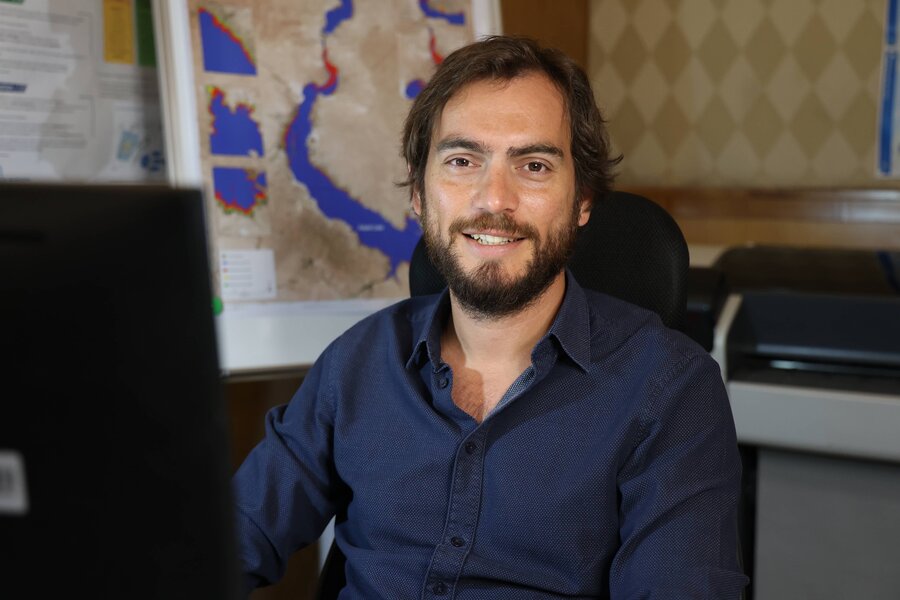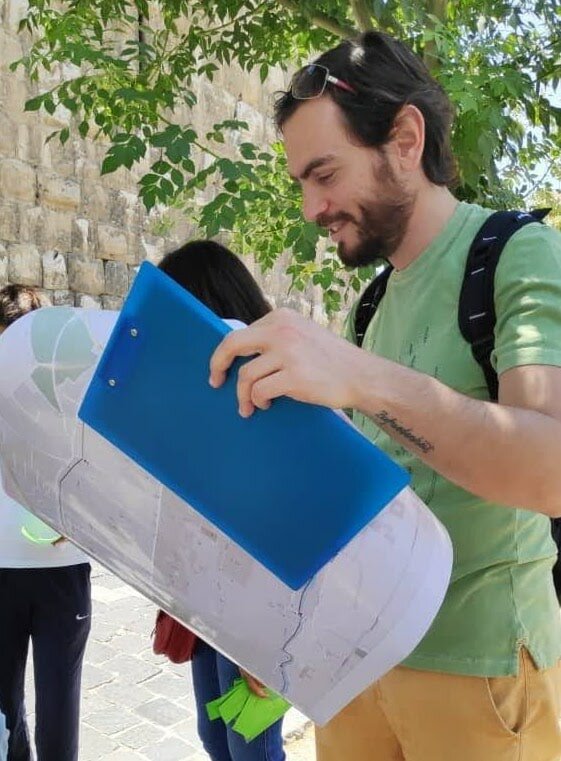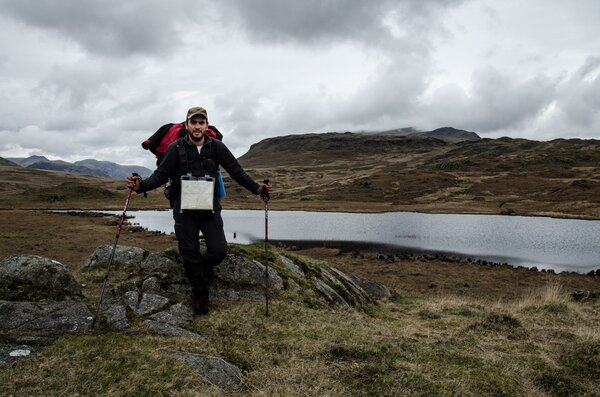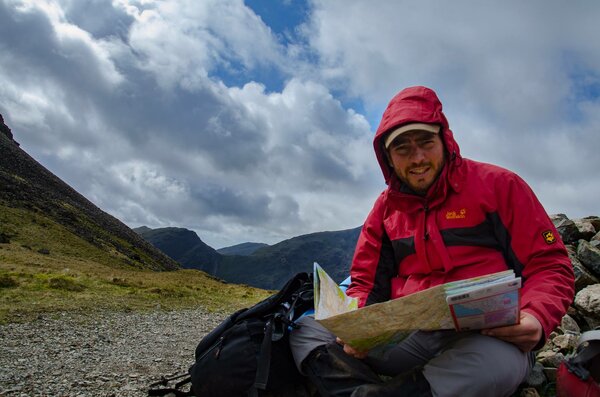WFP, my work and me…Dimitris Karakostis
If you are looking for Dimitris Karakostis, chances are you’ll find him behind a computer, on top of a mountain or in the old markets of Damascus looking at a map. For the past year he has worked to establish the GIS team for the World Food Programme (WFP) in Syria, where he uses maps and geospatial technologies to see the country through a new and innovative lens. In a typical day, he can monitor wildfires, water levels in rivers and support his colleagues to access information about communities hundreds of kilometres away.

Who has inspired you most in your life?
The person who has inspired me the most is my father. He’s a math teacher but he also loves geography and was very good at it. I remember as a kid we had different maps in our bedrooms and, before we’d fall asleep at night, he’d come and teach us about rivers and lakes in Greece and in Europe. I think this is how I fell in love with geography and history, as these two things are related. As I grew up, my love of geography connected me with travelling, mountaineering and the career I now have with the World Food Programme. But I believe the source of inspiration for all of it was my father explaining the world to us through maps. This is something I realized much later on in life and I think it’s pretty amazing.
What is the best decision you have ever made?
I don’t believe in bad decisions. The important thing is to keep moving, to keep learning and to keep experiencing. I think joining WFP and coming to Syria was one of the best decisions I’ve made in my life. It’s incredible how being exposed to new cultures and being away from your comfort zone helps you to grow and discover different layers about yourself, both personally and professionally. Working overseas, meeting new people, experiencing new things, learning all the time, being in a multicultural environment, has been an amazing experience so far. While in Syria, I’ve had the chance to self-reflect and learn more about how I react in different situations, how I handle stress and overcome challenges. These are things I wouldn’t have realized if I didn’t move to Syria, so I’m grateful for that.
Which words or phrases do you most overuse?
I have a huge list of phrases that I like to use and to repeat at different moments of my life. But there are two that I use quite a lot. One is quite simple: “Think positive.” I think it’s a trigger in my head to change my mindset. There’s always a positive side to things and even if we don’t always see it, it’s there. It’s just a matter of perspective. The other one is: “If you can’t control something, don’t worry too much.” If something is outside our hands, we should focus on the things we can actually change. I think these expressions help me a lot, especially in Syria where the work is busy, demanding and fast-paced.
Where in the world would you most like to live?
It’s not always a matter of place, it’s what you do there and who you meet. If you are passionate about what you do, you can find joy in everything. Here in Damascus, my friend and I started a small weekend project to create maps in the Old City. This part of Damascus is magnificent and is filled with small alleys, spice shops and markets, and you never know what will be around the next corner.
Before the conflict, local authorities made thematic maps of Damascus so that locals and tourists could follow arrows and signs around the city and discover hidden gems. Unfortunately, during the last decade, many of these have been lost or covered, so I guess that curiosity drove us to discover them.

We wondered where each arrow would take us, and we were excited to discover new parts of the city. It was like someone had set up a giant game for us. During this adventure, we’ve met some great people and found many places we’d have otherwise missed. Plus, it was very rewarding at the end of each weekend to look at the map and seeing it getting more complete.
So when my friend and I found all the routes, we got this idea that we could use them to design some kind of treasure hunt. My friend is a teacher and she suggested the idea to her students, who got so excited about it. For me also it was like a dream. Being able to do something that brings fun to the kids here, it feels good. We got a lot of positive feedback and they really loved it. There are six coloured routes and we have a lot of ideas.
However, I would like to go back at some point to my home country and spend some time there as an adult, since I have lived most of my adult life outside of Greece. My humanitarian career has altered me positively. I found a purpose and a meaning in working towards a better world. Nowadays, our world is so interconnected.
Climate change, epidemics, financial crises can affect anyone, no matter where they are. I would like to work on something which would have a positive impact on our world and my birthplace. I believe Mother Teresa once said: “If you want to change the world, go home and love your family.” I like that.
Why do you do the work you do?
It’s such amazing work – working with maps, with geographical information systems, putting data together on a map and trying to see the relations. It’s so much more than maps. Mapping and cartography is science and art at the same time. It’s a way of giving this information and putting it on a map in a way that people can understand. It is actually very challenging and very beautiful.
I like visualizations and showing things through maps. But then you have the analysis and all the cool technology around it. It’s very multidisciplinary work, it combines all different technologies. Working for WFP in Syria, the applications are so many. We can do so many different things and we are working with so many different teams in the office, so we never get bored. It’s a really cool area to work in and for sure we need more GIS experts in today’s world.


When have you felt at your happiest?
I always feel the happiest when I go long-distance hiking, and when I go to the mountains. This is where I feel the ultimate adventure is. When I’m in the mountains and the forest with my GPS, a compass and a map, I feel the happiest. It’s the best way to clear my mind.
I think one of the happiest periods in my life was when I did the famous Camino De Santiago hike around seven years ago from France to northern Spain. I walked 900 km over 40 days and I remember how happy I was during that period. With just my backpack, being out in nature and meeting very interesting people along the way. It was like the ultimate adventure for me. Since then I started hiking and having this connection with nature more and more. This makes me feel very satisfied and truly very happy.
